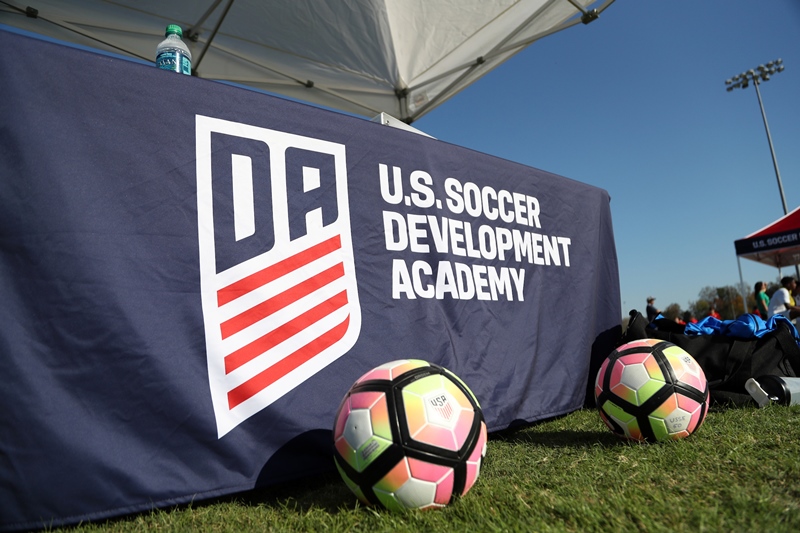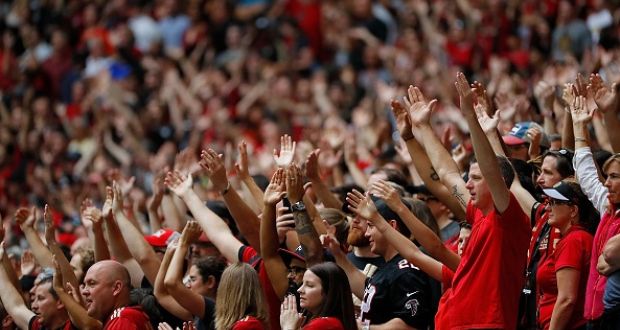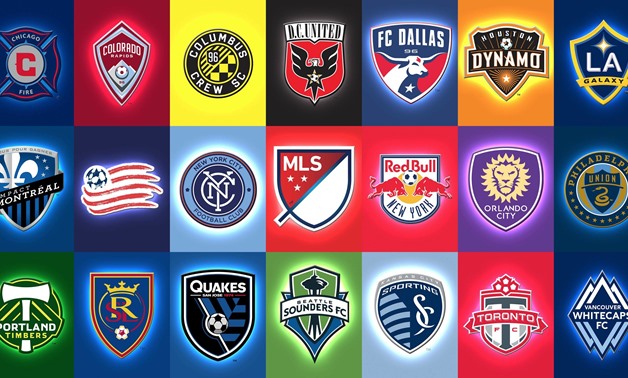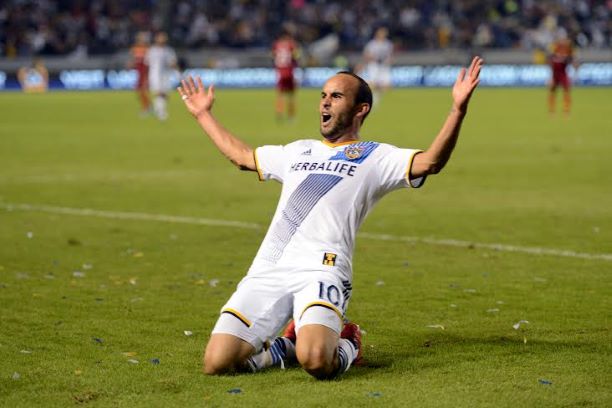How To Revive A Sleeping Giant
How To Revive A Sleeping Giant


By Saheli RC, writing from Singapore
You know you’re a fan of Argentina when you no longer feel that massive heartbreak upon seeing your team lose out on a penalty shootout and therefore get eliminated from a competition. After last Sunday’s underwhelming performance, which could only be sorted from the spot, the question on everyone’s lips is “Where did it all go wrong?”
Imagine the situation: host nation, tournament favourites, boasting the world’s best player among their ranks and sky high expectations from local and international fans and observers alike, Argentina are the sleeping giants of the twenty first century. Gone are the days when the mere mention of Los Albicelestes struck the fear of God amongst the opposition, when the Lord himself bowed his head in admiration as the ‘Hand of God’ clinched itself a permanent berth in football’s pantheon.
Today, Argentina are, in the classical footballing sense, a team of ‘has-beens’; having won their last major tournament in 1993’s Copa America. There is no dearth of talent coming through the ranks, producing generation after generation of big, successful names known all over Europe and the world. Almost every one of the major leagues in Europe boast Argentine household names, including the incumbent holder of the FIFA World Player of the Year award. Despite their overwhelming presence in football’s foreground, Argentina’s national achievements have consistently been taking a backseat.
Their list of scuppered attempts at reclaiming world glory is vast. From a woeful performance in World Cup 2002, where they failed to get past the group stages, to losing against Brazil (Copa America 2004) and Germany (World Cup 2006) at penalties, to another pitiful 3-0 defeat against Brazil in the final of Copa America 2007, a 4-0 hammering once more at the hands of the Germans in South Africa, they now add elimination at the hands of Uruguay, in their own backyard, to the long list of recent disappointments.
The Blame Game
Blaming the coach is not a novel concept in football, and one I personally regard to be petty on most occasions. When a club fails to achieve seasonal targets, regardless of how impossible they might be, the coaches are normally the first casualties. Just ask Manuel Pellegrini (Real Madrid) and Carlo Ancelotti (Chelsea). In the case of Sergio Batista, however, I am more inclined to sail along with this popular belief for a number of reasons.
Batista announced right before the start of Copa America that homeboy Carlos ‘Carlitos’ Tevez did not have a place in his proposed lineup. On his team selection prior to the opening game against Bolivia, Batista caved into national pressure and gave Tevez a start. The result? A dreary 1-1 draw, which would not have been possible if it were not for super-sub Kun Aguero’s fantastic second half equaliser. Tevez not only failed to connect with Messi and Lavezzi, he spent the entire game with a personal agenda to prove himself. That would have been all well and good if his individualistic efforts had actually produced tangible results.
Despite Tevez’s underwhelming performance, he still received the green light, ahead of Aguero, Di Maria and Higuain, against Colombia - a match where Argentina should thank its lucky stars for a 0-0 draw. It was only against Costa Rica, where anything but a win would’ve sent this football crazy nation into utter chaos, did Batista revert back to his original plan and benched both Tevez and Lavezzi for their lack of efforts in the opening two games. The result? A convincing 3-0 win where the team showed glimpses of the perennial powerhouse that people once considered Argentina to be.
Against Uruguay, and the irony cannot be missed here, it was Tevez - the home boy, the favourite son of Argentina - whose missed penalty was eventually responsible for the exit of the hosts. When he was brought on to replace Aguero, many scratched their heads as the substitution made no sense, especially when the game looked certain to be heading into extra time. It seemed as if this was Batista’s one last attempt to play up to the faithfuls - introduce the people’s choice and pray to the high heavens for him to turn the game around. Tevez did turn the game around alright, but just not in the direction people wanted, as Batista’s final gamble backfired.
Prior to the tournament, Batista had also announced his intention of playing in a 4-3-3 format, emulating the style of Pep Guardiola’s Barcelona. On paper, that’s well and good and given how much Barcelona won in so little time, it’s an admirable sentiment too. However, Batista grossly miscalculated the formation’s practicality on the pitch for Argentina.
While I’m not expert on tactical formation, I believe one of Barca’s most important position is that of the wingback. An aggressive, fast-paced player like Dani Alves poses a constant threat down the flank, causing the opposition defense to stretch by drawing out the fullbacks - therefore leaving their rivals vulnerable in the middle for Xavi or Iniesta to make that deadly pass leading up to a goal.
In Argentina’s case, Rojo, Zabaleta and Zanetti (aged 38) cannot pass for Dani Alves. Despite moving up the flank, their presence hardly created a threat and in the first game, Bolivia were content to sit tight in the middle and prevent a build up of play. Against Colombia, Rojo was sacrificed for Zabaleta who made minimum impact in widening the game.
Secondly, another very important player in the Barcelona lineup (despite the on-field shenanigans and misdemeanour) is Sergio Busquets. Watch the Catalans and you’ll realise for every goal scored from open play, the first touch probably came from him. His distribution across the field is undeniably impressive, enough to warrant him a near ‘indispensable’ status among Guardiola’s men. In Argentina’s line up, the closest equivalent to Busquet was his teammate Javier Mascherano. With all due respect for Mascherano, they are not quite on the same level.
Third, and most importantly, I cannot fathom why Pastore did not merit a starting place. If you play with two holding midfielders, as was the case here, with Mascherano and Cambiasso, surely your third midfielder should be someone who can create chances? Ever Banega was tasked with this role and he failed at it. Batista used Messi as a false nine, much like how he plays at Barcelona. At Barca, whenever Messi drops back, he opens up space for the attacking midfielder to launch an attack - this spot is either filled up by Xavi or Iniesta and they connect with the two wide forwards, Pedro and Villa, to create chances. For Argentina, Banega seldom moved forward into this space to take advantage, leaving Tevez and Lavezzi on their own.
Lastly, the question of Lionel Messi’s performance has also been the topic of much discussion. Some believe, and Argentina Football Association (AFA) president Grondona is among them, his teammates let him down while others quote examples of greats like Zidane and Figo, who singlehandedly helped their teams advance in international competitions. There is no straight-forward answer to this: the fact remains that Argentina does have the talent to complement and compensate Messi’s style of play and if they are utilised properly, they can become the best in the world by 2014.
Looking ahead
However, to do that, they first need to improve on two very important areas. First, their defense, which has been their Achilles’ heel for as long as I remember watching them play. How many times have we seen a momentary lapse in concentration come back to haunt them? Germany v. Argentina in 2006 anyone, where slack defending allowed Klose to take the game into extra time and eventually to penalties - and the Albicelestes do not have a particularly great record at it.
Secondly, and more importantly, it is time Argentina hires a proper coach - not an ex-player turned coach - who isn’t afraid to make hard decisions, who wouldn’t cave into public pressure like Batista did, and before him Maradona, and include undeserving players to appease the crowd. Over the past few days, there have been talks that AFA are looking to replace Batista, with Paraguay coach Gerardo Martino (who is leaving his post after the Copa America) and Alejandro Sabella being touted as the front runners.
With the 2014 World Cup qualifiers for CONMEBOL beginning later this year, it’s crunch time for Argentina as its faithfuls count down another three years for the opportunity to see them lift the World Cup again. The prospects certainly look bright with the likes of Erik Lamela, Rogelio Funes Mori, Sergio Araujo, among many others, waiting in line to be handed the national shirt. But the question remains: can they find someone to put all the different puzzle pieces together and reawaken the sleeping giants?







